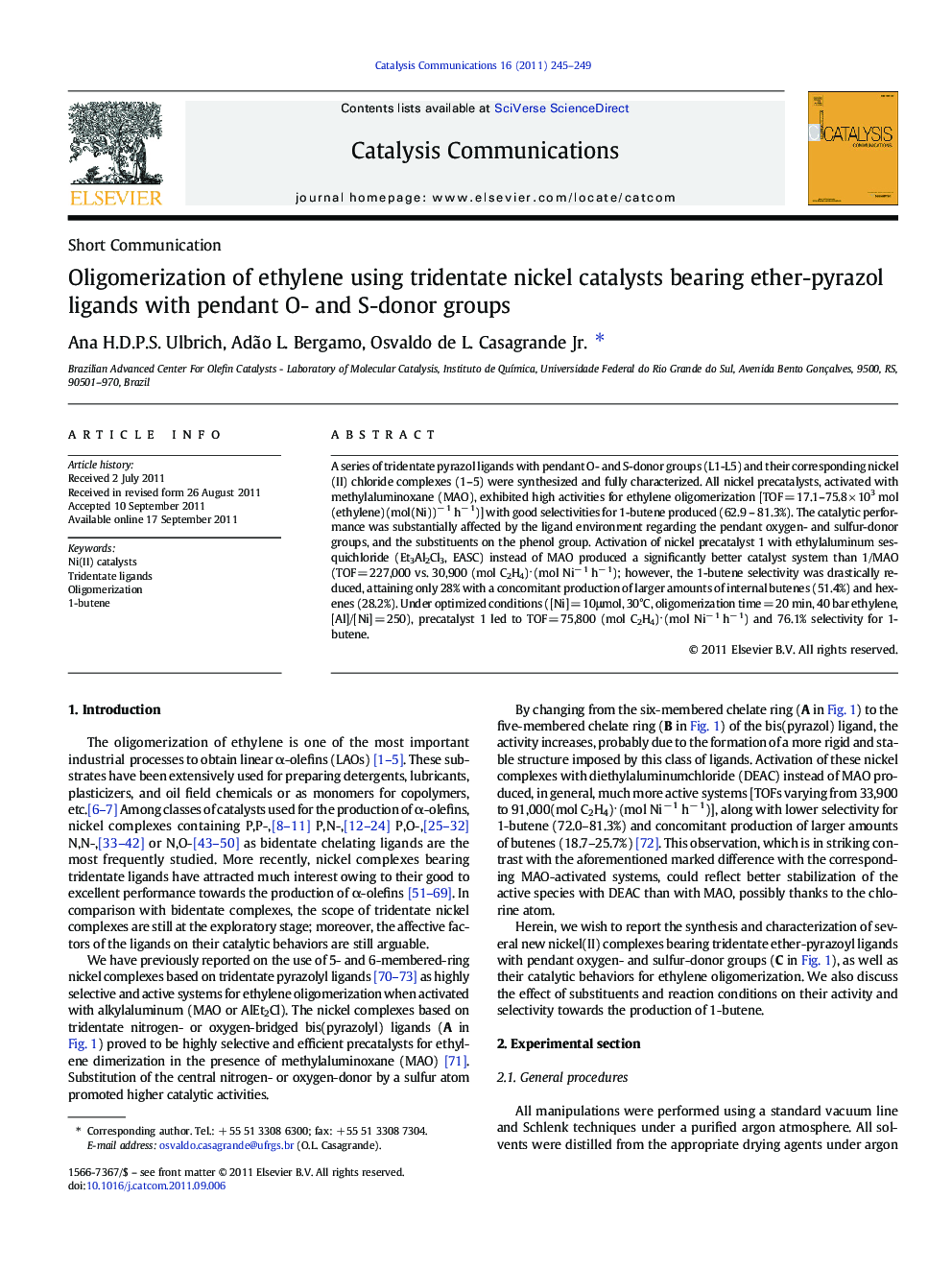| Article ID | Journal | Published Year | Pages | File Type |
|---|---|---|---|---|
| 51599 | Catalysis Communications | 2011 | 5 Pages |
A series of tridentate pyrazol ligands with pendant O- and S-donor groups (L1-L5) and their corresponding nickel(II) chloride complexes (1–5) were synthesized and fully characterized. All nickel precatalysts, activated with methylaluminoxane (MAO), exhibited high activities for ethylene oligomerization [TOF = 17.1–75.8 × 103 mol(ethylene)(mol(Ni))− 1 h− 1)] with good selectivities for 1-butene produced (62.9 – 81.3%). The catalytic performance was substantially affected by the ligand environment regarding the pendant oxygen- and sulfur-donor groups, and the substituents on the phenol group. Activation of nickel precatalyst 1 with ethylaluminum sesquichloride (Et3Al2Cl3, EASC) instead of MAO produced a significantly better catalyst system than 1/MAO (TOF = 227,000 vs. 30,900 (mol C2H4)⋅(mol Ni− 1 h− 1); however, the 1-butene selectivity was drastically reduced, attaining only 28% with a concomitant production of larger amounts of internal butenes (51.4%) and hexenes (28.2%). Under optimized conditions ([Ni] = 10μmol, 30°C, oligomerization time = 20 min, 40 bar ethylene, [Al]/[Ni] = 250), precatalyst 1 led to TOF = 75,800 (mol C2H4)⋅(mol Ni− 1 h− 1) and 76.1% selectivity for 1-butene.
Graphical abstractFigure optionsDownload full-size imageDownload as PowerPoint slideHighlights► Nickel complexes supported by tridentate ligands bearing O- and S-donor groups. ► Nickel precatalysts exhibit high activities in ethylene oligomerization. ► Selectivities for 1-butene produced varying from 62.9 to 81.3%. ► EASC increase substantially the activity (TOF = 227,000 (mol C2H4)⋅(mol Ni− 1 h− 1).
